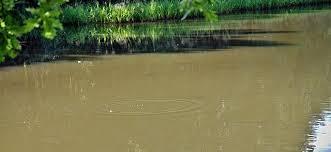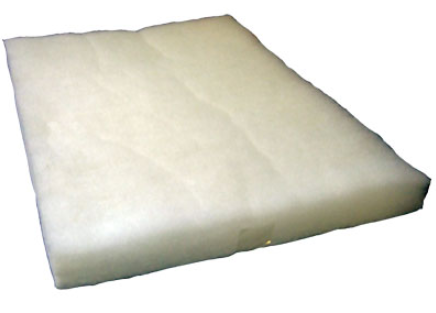Brown Water

Brown water is an uncommon problem that pond keepers may face throughout their time owning a pond. There are only two reasons why your pond may be brown; tannins or loose soil.
If there are Koi with live plants, it is likely that the Koi has disturbed the plant and the soil has become animated in the pond water, giving the water a brown appearance. Alternatively, if your pond has a tree nearby, then the leaves or other organic material may fall into the pond, releasing tannins into the water. The tannins can also be released via plantlife through a natural process.
An easy way to identify the cause of the brown water is to take a glass of water and leave it on a surface for an hour. When you check on the glass, check for the following:
• If there is a small mound at the bottom of the glass then this is soil.
• If the water is still brown, then it is likely to be tannins.

You will need a fine filter foam to remove fine soil or sediment in the pond. This will catch any fine soil that is passed through the filter. You may need to replace one of the foams in your filter system.
Alternatively, you can vacuum your pond (you can use a vacuum with a collection basket; just add a layer of fine filter foam to the collection basket to remove the silt), use a net with a fine mesh or do a partial water change. This will help remove any sediment and sludge from the pond. If you do a partial water change, remember to dechlorate any tap water you put back in.
If the silt remains after using fine filtration, the last resort is to completely change your water. This is the last resort as you will be disrupting the ecosystem that has been created in the pond and you will be resetting the chemicals in the pond.
How to treat the tannins
If you have filled a glass with pond water and the water remains brown after half an hour, then the brown water is likely caused by tannins. There are several ways to treat the tannins in your pond. But we have outlined a simple step-by-step process below:
• Firstly, cut back any overgrown plants; also check for any sticks, leaves or other organic material on the surface or bed of the pond. You can use a pond cover net to catch the leaves before they enter the pond.
• Secondly, treat the tannins in the water by adding healthy bacteria to the pond, using gels and treatments such as the PondXpert Gel Balls. The healthy bacteria will spread across your pond; reducing the levels of tannins, ammonia, nitrites and nitrates in your pond.
• Thirdly, use activated carbon; if you fill a mesh bag with the carbon and hang this into your pond, this can help tackle the tannins in the water.
• Fourthly, do a partial (10%) water change, which will help to dilute the tannins in the water. Do not forget to use dechlorated tap water or rain water.
If you need any advise, please email us on info@pondkeeper.co.uk.